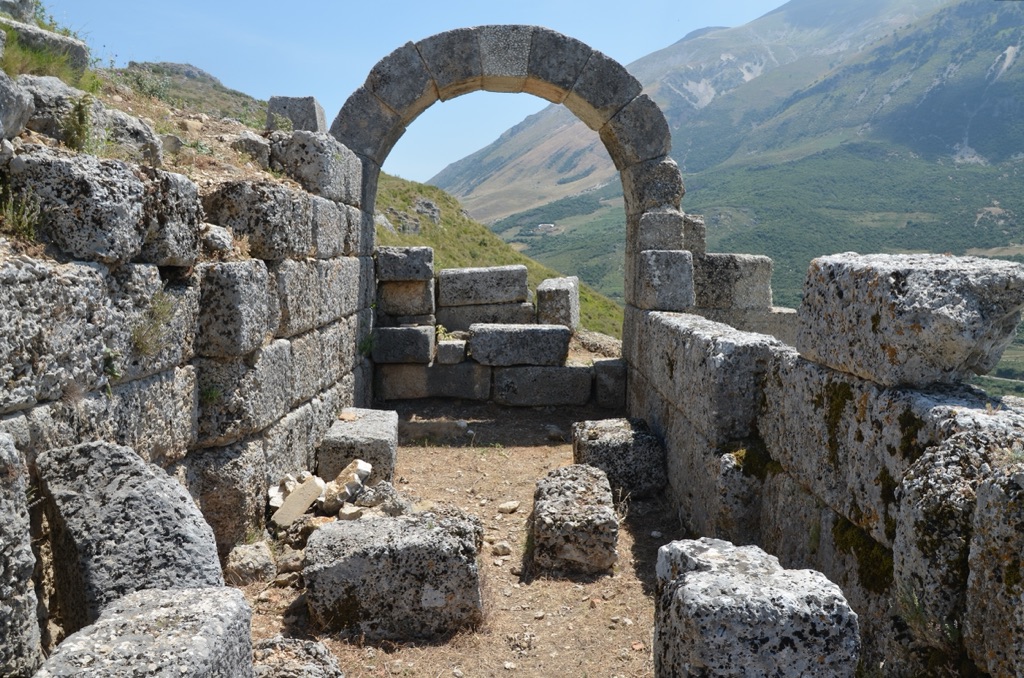Amantia, an ancient city located in present-day Albania, boasts a rich history dating back to the classical period. It was a significant settlement in the region, known for its strategic position and strong fortifications. The city’s ruins, including the remnants of a stadium, a temple, and an acropolis, offer a glimpse into its storied past. Amantia’s historical importance is further highlighted by its inclusion in ancient texts and its role in regional conflicts.
Get your dose of History via Email
Historical Background of Amantia
Amantia was discovered in the 19th century, with archaeological efforts intensifying in the 20th century. The city’s origins trace back to the 5th century BC, built by the Illyrians. It stood as a formidable stronghold, controlling the Vjosë valley. Over time, Amantia saw various inhabitants, including the Greeks and Romans. It played a role in historical events, such as the Illyrian Wars. The city’s decline began in the late antiquity period, leading to its eventual abandonment.
The city’s founders, the Illyrians, were known for their warrior culture. They built Amantia on a hill, providing a natural defense. The Greeks later influenced the city, as evidenced by Hellenistic elements in its architecture. The Romans also left their mark, integrating Amantia into the Roman Empire. The city’s history is a tapestry of cultural influences, reflecting the ebb and flow of regional power.
Amantia’s discovery was not the result of a single individual’s efforts but rather the cumulative work of various archaeologists and historians. The site’s excavation has revealed artifacts and structures that provide insights into its past. The city’s strategic location made it a valuable asset for controlling trade routes and military movements, contributing to its historical significance.
Throughout its history, Amantia experienced periods of prosperity and decline. It was inhabited by different groups, each leaving their imprint on the city’s culture and architecture. The city’s fortifications were reinforced and expanded over time, indicating its importance in regional defense strategies.
Amantia’s historical narrative is not just about the city itself but also about the broader context of the region’s history. It was a scene of conflict during the Illyrian Wars, which pitted the Illyrian tribes against the expanding Roman Republic. The city’s history is intertwined with the rise and fall of empires, showcasing the dynamic nature of the ancient world.
About Amantia
Amantia’s ruins are a testament to its historical significance. The city’s stadium, one of the few known from the Illyrian world, could seat around 4,000 spectators. The temple, dedicated to Aphrodite, reflects the Greek influence on Illyrian religion. The acropolis, with its walls and gates, stands as a symbol of the city’s defensive capabilities. The use of local limestone in construction is evident throughout the site.
The city’s architecture showcases a blend of Illyrian and Hellenistic styles. The stadium, with its elongated shape, is characteristic of Greek design. The temple’s remnants suggest a typical Greek peripteral structure. The acropolis, with its strategic position, demonstrates the Illyrians’ understanding of military engineering. The construction methods reveal a society capable of organizing large-scale building projects.
Amantia’s building materials primarily consisted of locally sourced limestone, known for its durability. The stone was quarried nearby and shaped for use in the city’s structures. The walls of the acropolis, some reaching impressive heights, were constructed using a polygonal masonry technique, a hallmark of Hellenistic engineering.
The city’s architectural highlights include the well-preserved stadium and the remains of the temple. The stadium’s design allowed for various athletic competitions, indicating the city’s participation in the cultural practices of the ancient world. The temple, although in ruins, provides insights into the religious life of Amantia’s inhabitants.
Amantia’s construction reflects the ingenuity of its builders. The city was designed to take advantage of its natural surroundings, providing defense and showcasing the Illyrians’ architectural prowess. The blend of cultural influences in its buildings illustrates the interconnectedness of the ancient Mediterranean world.
Theories and Interpretations
Several theories exist about Amantia’s purpose and significance. Some suggest it was a religious center, as indicated by the temple of Aphrodite. Others believe it was primarily a political and military stronghold. The mysteries of Amantia include the exact nature of its decline and the daily lives of its inhabitants.
The city’s use has been interpreted through the lens of historical records and archaeological findings. The presence of a stadium suggests a cultural emphasis on athletic events. The temple points to religious practices influenced by Greek traditions. The fortifications imply a constant need for defense against external threats.
Dating Amantia has involved various methods, including stratigraphy and typology of artifacts. These techniques have helped establish a timeline for the city’s development and decline. The dating has been crucial in understanding Amantia’s place in the broader history of the region.
Some aspects of Amantia’s history remain subject to interpretation. The lack of written records from the Illyrians themselves means that much of what is known comes from external sources. This reliance on Greek and Roman accounts can lead to a biased understanding of the city’s past.
Amantia’s significance in the ancient world continues to be a topic of research and debate. The city’s role in regional politics, its cultural practices, and its interactions with neighboring powers are areas of ongoing study. Each discovery at the site adds a piece to the puzzle of Amantia’s history.
At a glance
Country: Albania
Civilization: Illyrian, with Greek and Roman influences
Age: Established in the 5th century BC
Conclusion and Sources
Reputable sources used in creating this article include:
- Wikipedia: https://en.wikipedia.org/wiki/Amantia

